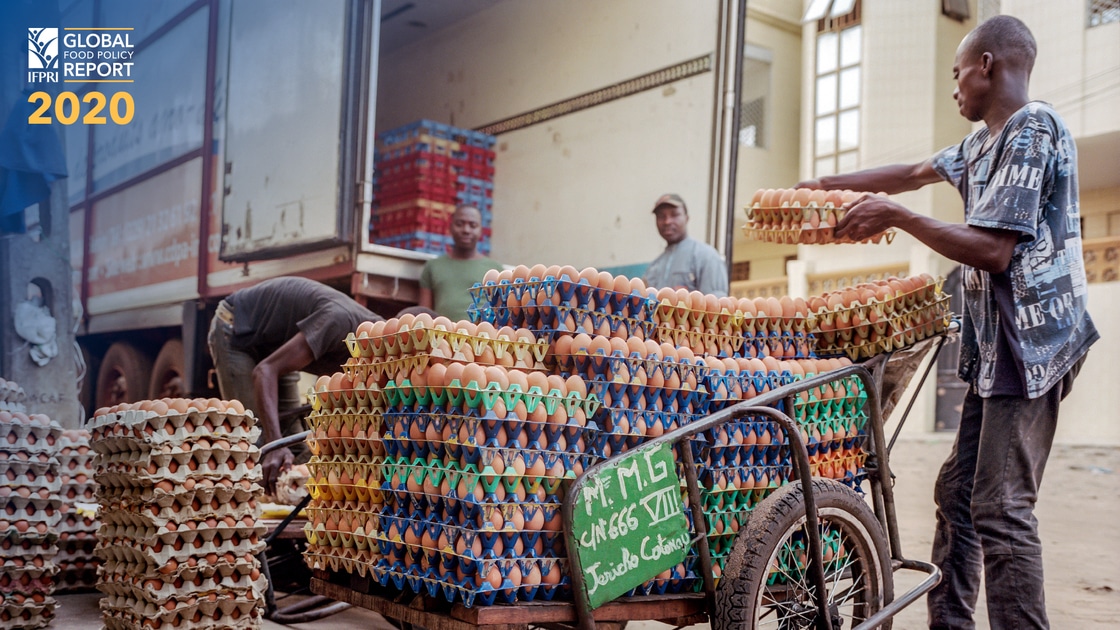Making food system value chains inclusive for smallholders and rural people
- From
-
Published on
22.07.20
- Impact Area

By Rob Vos and Khiem Nguyen
Rapid urbanization and income growth are driving shifts in the diets of urban consumers in low-income countries in Africa and South Asia from inexpensive staple cereals to higher-value products such as fruits, vegetables, and animal-sourced foods. While the current disruption to incomes and supply chains from the COVID-19 pandemic may slow these developments and threaten food security in the near term, the longer-term demographic trends and related demand changes will provide important opportunities for agricultural development and reducing rural poverty.
As Chapter 2 of IFPRI’s 2020 Global Food Policy Report outlines, meeting these challenges and changing demands, and capitalizing on the opportunities they bring, will depend on agrifood system transformation. Yet some of the required adjustments will pose significant barriers to smallholder farmers, who often lack both the means to invest in growth and access to markets. In order to leverage the potential of food systems to improve the livelihoods of smallholders and rural workers, policies will need to promote nonfarm job and income generation through development of the “hidden middle” of agrifood supply chains; and improve farm productivity and incomes by connecting smallholders to markets.
The “hidden middle”
Achieving inclusive agrifood transformation may ultimately hinge on the “hidden middle” of the food supply chain, now dominated by millions of small and medium-sized enterprises (SMEs) in transportation, processing, and distribution. Largely overlooked so far, this so-called quiet revolution presents an opportunity for researchers and policy makers. Recent evidence shows that with better access to improved infrastructure and credit, SMEs can thrive and become instrumental in connecting farmers to markets. This, in turn, will integrate smallholders into the agrifood value chain and increase their market access.
In both Africa and lower-income Asia, 25% of overall rural employment already comes from the midstream of food supply chains. Moreover, household survey data from African countries shows that income from rural nonfarm agrifood enterprises is more than double the income derived from farm activity. To effectively tap into this potential, policies must focus on providing adequate infrastructure, proper market incentives, and skills development, and on encouraging inclusion of smallholders in agrifood supply chains by securing land tenure, promoting inclusive agribusiness models, and stimulating digital technology use.
Photo Credit: Joan Bardeletti/Panos
![]()
Related news
-

World Food Day 16 October: A Hungry World Knows No Borders
International Crops Research Institute for the Semi-Arid Tropics (ICRISAT)16.10.25-
Food security
-
Poverty reduction, livelihoods & jobs
When crops fail, people move not by choice, but by necessity. As families are displaced…
Read more -
-

From Traditions to Triumph: Premalata’s Success with Solar-Dried Fish in Odisha
WorldFish09.10.25-
Poverty reduction, livelihoods & jobs
Premalata Behera, a 40-year-old member of Maa Women Self Help Group and resident of the…
Read more -
-

ICRISAT Brings Frontier Agricultural Science to the Caribbean in Landmark Partnership
International Crops Research Institute for the Semi-Arid Tropics (ICRISAT)03.10.25-
Nutrition, health & food security
-
Poverty reduction, livelihoods & jobs
The world’s premier institute for dryland agriculture and a globally acclaimed research center, th…
Read more -
